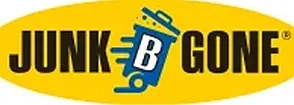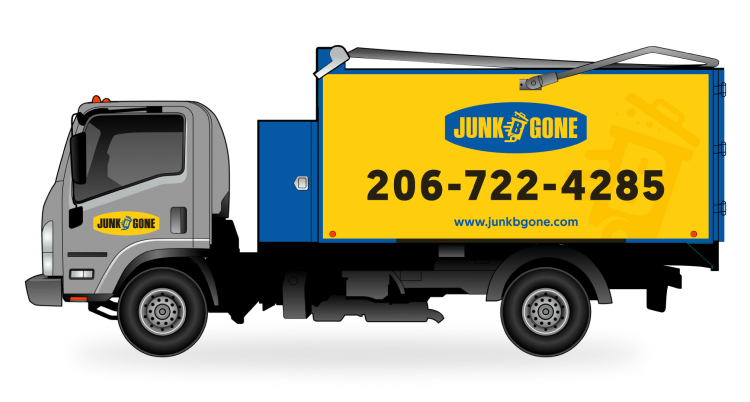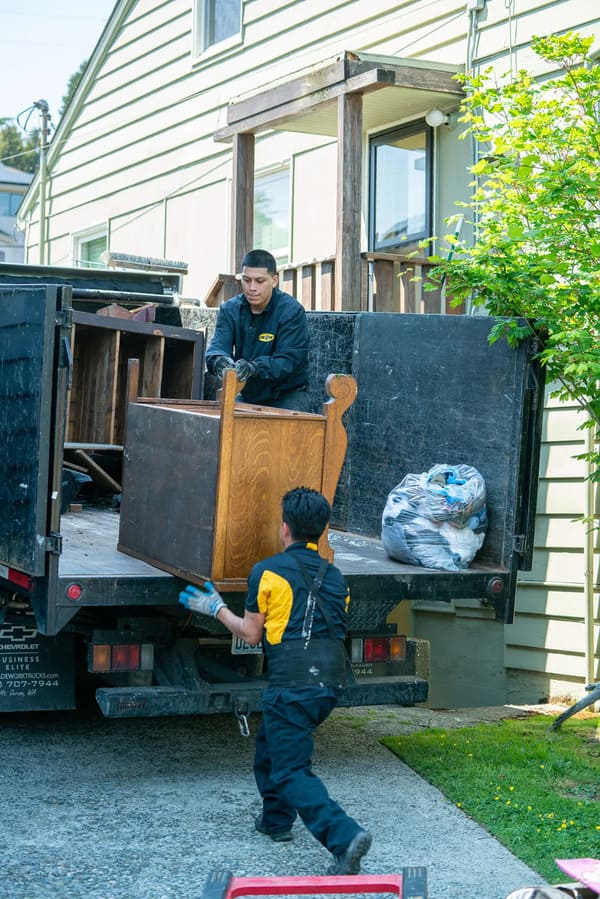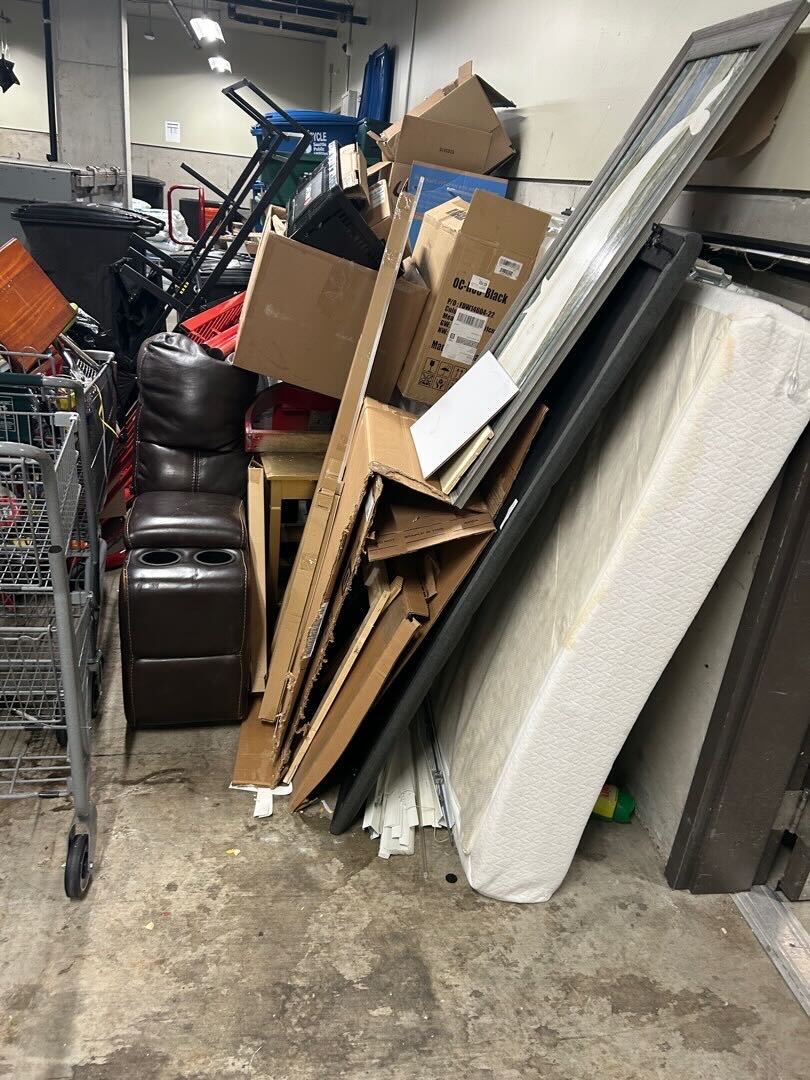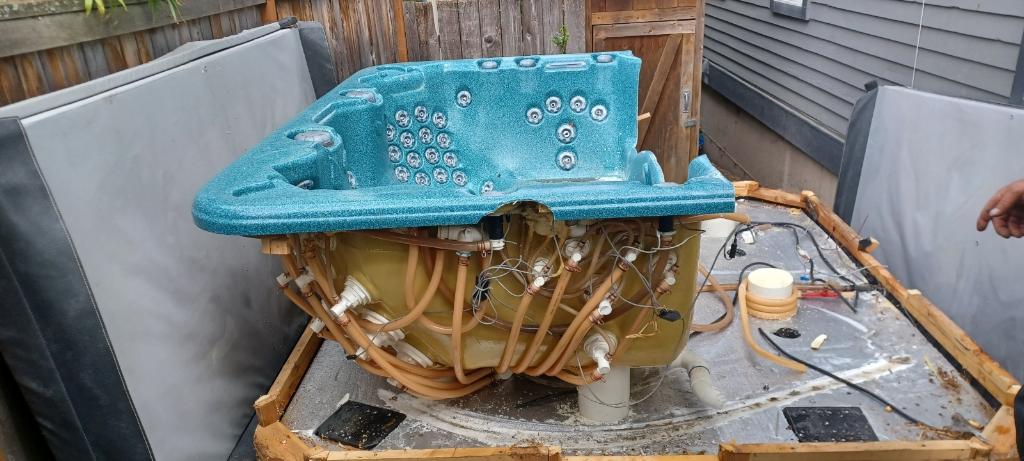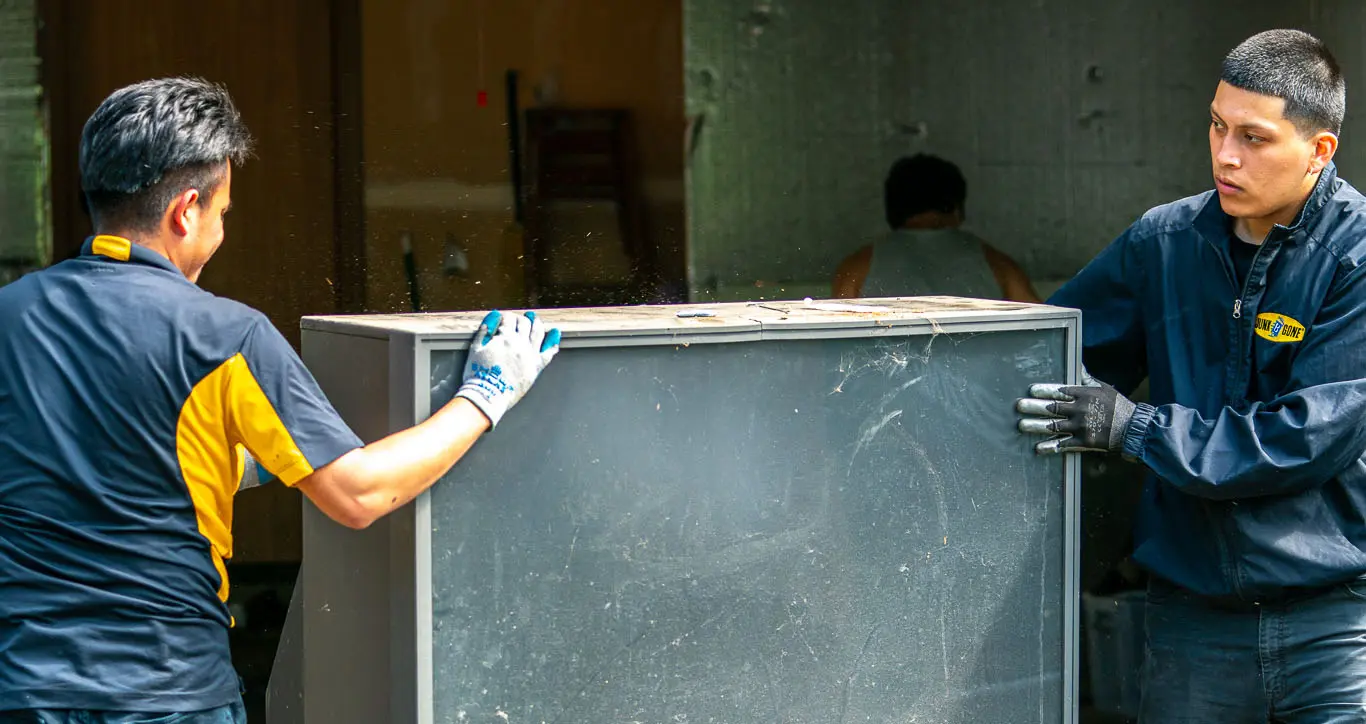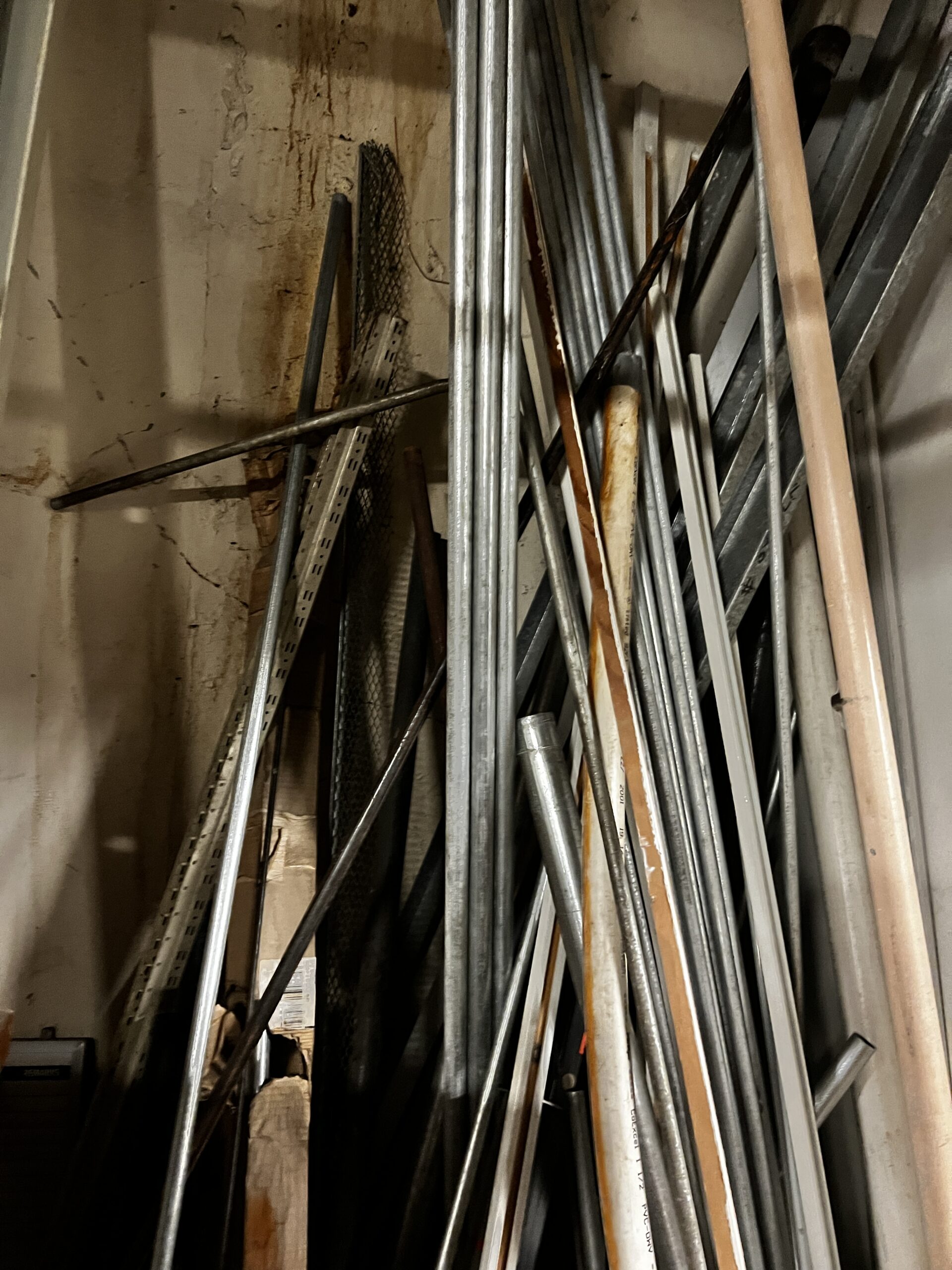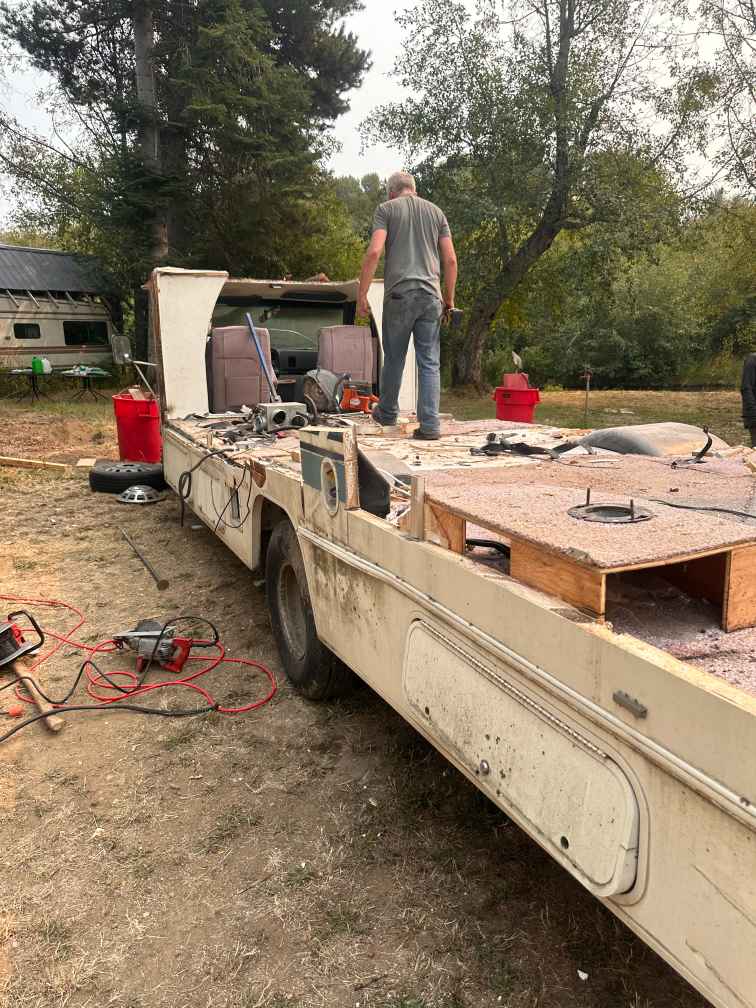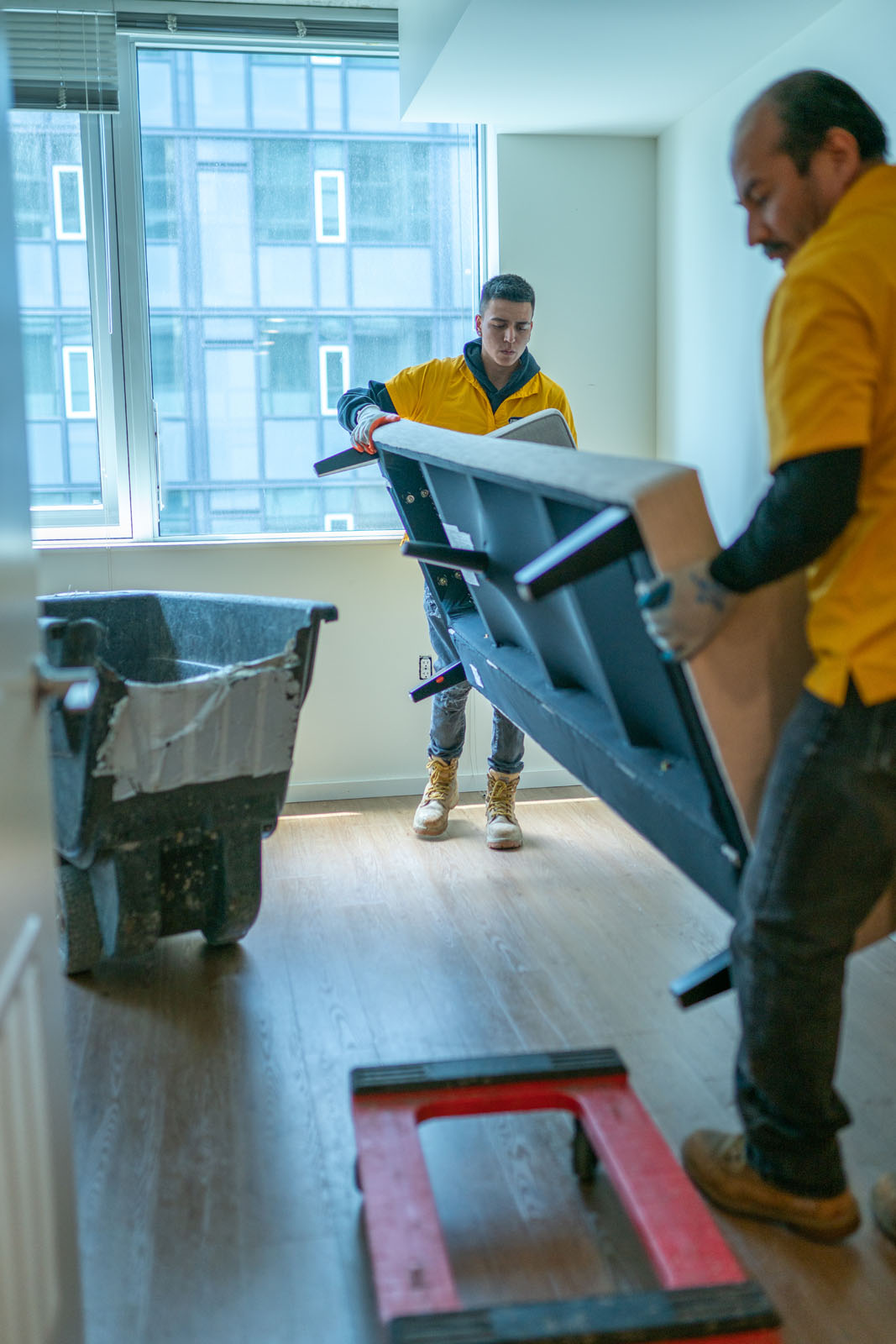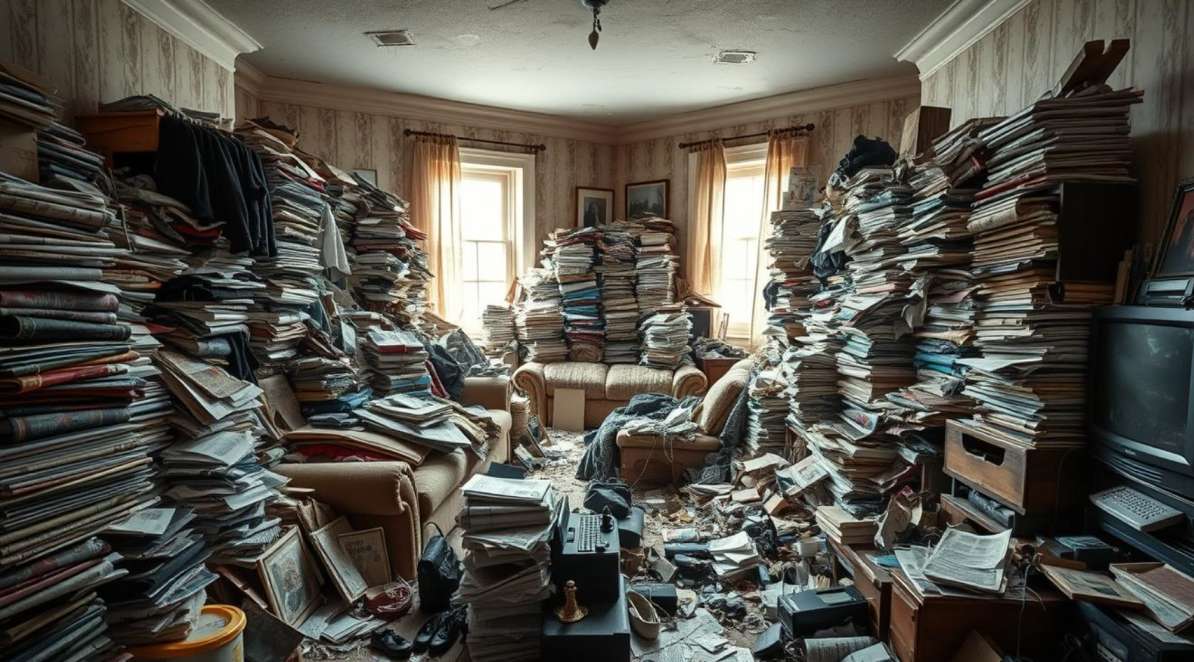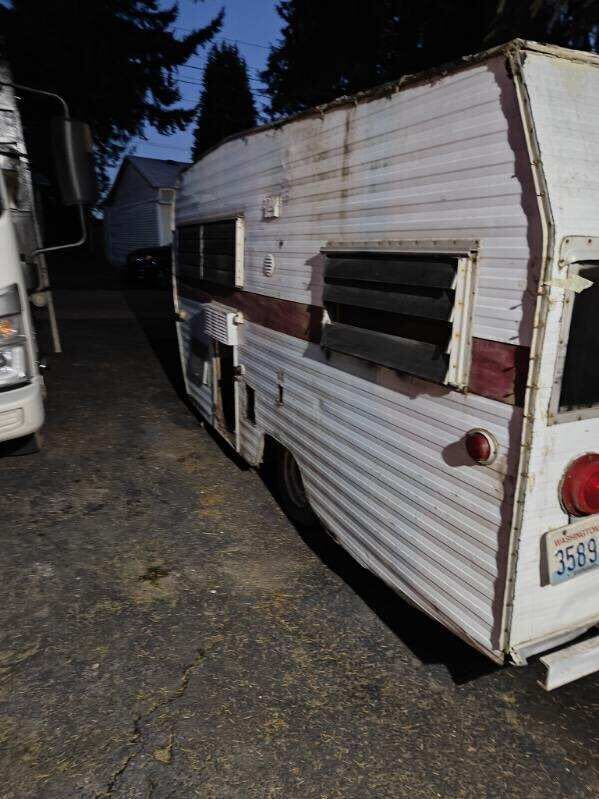Got Dirt? Here’s what you need to know and how to get rid of it.
Whether you’re a homeowner renovating your garden, a contractor dealing with construction debris, or simply someone trying to clear out excess soil, understanding the ins and outs of dirt disposal is crucial. It’s not just about keeping your property clean; it’s about respecting our planet and adhering to local regulations. In this guide, we’ll navigate the often-overlooked world of soil disposal, shedding light on why proper dirt disposal matters and how it can impact the environment.
Dirt disposal may seem straightforward, but there’s more to it than meets the eye. From distinguishing between different types of soil to knowing where you can legally offload dirt, the process can be complex. Moreover, improper disposal can lead to significant environmental and legal repercussions. But don’t worry, we’re here to make this journey as smooth as possible. By the end of this guide, you’ll be equipped with the knowledge to handle dirt disposal responsibly, efficiently, and most importantly, legally. So, let’s dive into the world of dirt disposal!
Types of Dirt and Soil
Before you start shoveling, it’s crucial to know what kind of dirt you’re dealing with. Not all soil is created equal, and the type you have can determine where and how you should dispose of it. Let’s break down the dirt basics:
- Topsoil: This is the superstar of the soil world, rich in organic matter and nutrients. It’s the top layer of the earth where plants grow best. When you’re gardening or landscaping, topsoil is your best friend. But if you have too much of it, you’ll want to find it a new home where it can continue to support plant life.
- Fill Dirt: Think of fill dirt as the unsung hero of the construction and landscaping worlds. This type of soil is typically found beneath the topsoil layer and lacks organic material, making it perfect for filling holes or changing land elevation. It’s not great for plants but ideal for structural projects.
- Contaminated Soil: Here’s where things get tricky. Contaminated soil is any soil that’s been tainted with harmful substances like oil, pesticides, or heavy metals. This is the bad boy of the bunch and needs to be handled with care, following strict regulations.
Now, let’s talk about the do’s and don’ts of dirt disposal. Tossing soil in the wrong spot can do more harm than good. Improper disposal of topsoil or fill dirt can lead to environmental issues like water contamination and habitat destruction. And when it comes to contaminated soil, the stakes are even higher. Disposing of it improperly can lead to severe legal and environmental consequences. It’s not just about avoiding fines; it’s about protecting our planet and ensuring a safe, healthy environment for future generations.
Every shovel-full of dirt has its place and purpose. By understanding the differences and acting responsibly, you contribute to a healthier, happier earth. So, let’s get it right and make sure our dirt ends up where it belongs!
How to Dispose of Dirt from Your Yard or Commercial Site.
When it’s time to clear out soil from your space, whether it’s a yard or a building site, you want to do it the right way. Here are some easy, responsible tips to help you manage that mound of earth without breaking a sweat (or the law):
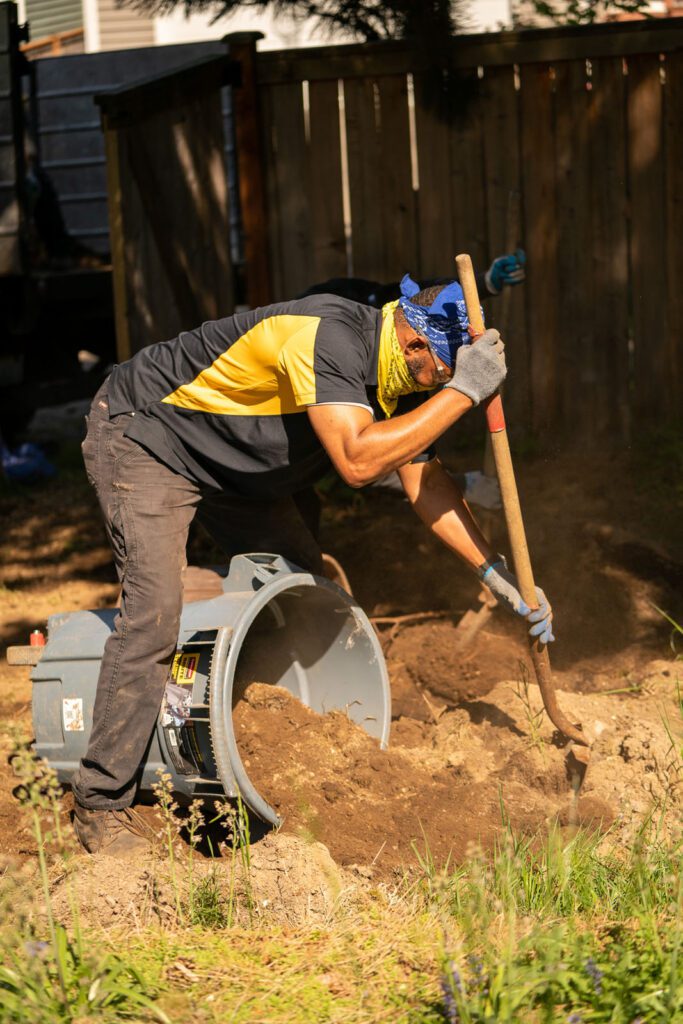
1. Assess and Separate
First things first, know what you’re dealing with. Is it nutrient-rich topsoil? Basic fill dirt? Or, heaven forbid, contaminated soil? Identifying your soil type is crucial as it dictates your disposal options. Separate them based on their types and potential uses. This step ensures that you’re not only disposing of soil correctly but also making the most out of each type.
2. Use It Elsewhere on the Property
Look around your property. Are there uneven areas that could use some leveling? Perhaps you’ve been dreaming of starting a vegetable garden? Use this opportunity to repurpose your excess soil. Topsoil can breathe new life into your garden beds, while fill dirt is excellent for landscaping projects like creating slopes or filling holes.
3. Share with Neighbors or Community
Community spirit for the win! If your soil is clean, offer it to neighbors, friends, or local community centers. Many people undertake projects like gardening, landscaping, or repairing erosion and could benefit from your excess soil. This not only helps you dispose of the dirt but also builds community relationships and supports local green initiatives.
4. Post Online
In the digital age, one person’s excess soil is another’s treasure. Platforms like Craigslist, Freecycle, or Facebook Marketplace are great places to offer your soil for free or for sale. Be sure to mention the type of soil and potential uses, and you might find it gone in no time!
5. Rent a Dumpster for Large Amounts
If you’re dealing with a vast amount of soil, especially from a commercial site, renting a dumpster might be your best solution. Ensure the rental company accepts dirt, as not all do. This method is straightforward and efficient, particularly for large-scale cleanups, ensuring that the soil is disposed of properly and without hassle.
6. Hire a Professional Junk Removal Service
When all else fails, or if you’re short on time, hiring a professional service can be a lifesaver. Some junk removal services like us also remove dirt, but double check before you hire them! We specialize in soil removal and know exactly how to handle and dispose of your dirt, regardless of its type. While this option comes with a cost, it offers peace of mind knowing that your soil disposal is being handled fast, responsibly, and legally.
Implementing these tips not only helps you clear out unwanted soil but also ensures that the disposal process is beneficial to the environment. By choosing the right disposal method, you contribute to the sustainability of our planet and help prevent potential pollution. So go ahead, tackle that dirt pile with confidence and responsibility!
Where to Dump Your Dirt
Got a pile of dirt and not sure where to take it? Don’t worry; we’ve got you covered with some down-to-earth tips to find the perfect spot for your soil. Here’s how to locate nearby dirt disposal options:
- Start with a Quick Online Search: Pop “dirt disposal near me” into your favorite search engine. This should bring up a list of nearby facilities like landfills, landscape supply companies, or recycling centers that accept soil.
- Check Local Landscaping and Gardening Stores: Many of these businesses either accept dirt or can direct you to nearby places that do. They might also know of community gardens or landscaping projects in need of soil.
- Utilize Social Media and Community Apps: Platforms like Nextdoor, Facebook groups, or community bulletin boards can be goldmines for finding local disposal sites or people who need dirt. It’s also a great way to connect with your community.
- Contact Construction or Excavation Companies: These businesses often deal with large amounts of dirt and might have their own disposal sites. They could be willing to take your dirt off your hands or suggest where you can dump it.
- Inquire at Local Waste Disposal Facilities: Some municipal waste facilities accept dirt and other types of clean fill. Give them a call to find out their policies and whether there’s a fee.
- Explore Environmental or Conservation Projects: Local environmental groups or conservation projects sometimes need dirt for restoration projects. Contributing to your soil can help support local ecosystems.
- Reach Out to Local Farmers or Equestrian Centers: Agricultural or equestrian centers often need dirt for various purposes. They might be happy to take your soil, especially if it’s topsoil.
When disposing of dirt, always ensure it’s free from contaminants and suitable for the intended use. By following these tips, you can find a new home for your soil that’s beneficial for both the environment and your community. Let’s turn that excess earth into someone else’s treasure!
What is the Cost of Dirt Removal?
When it comes to dirt removal, not all jobs are created equal. The cost can vary widely based on a few key factors. Here’s what you need to know to get a handle on how much you might spend to clear that mound from your backyard or job site:
- Volume and Weight: The more dirt you have, the more it’s going to cost to remove. Pricing is often based on volume (cubic yards) or weight (tons), so measure your pile to get a rough idea of what you’re dealing with.
- Accessibility: Can a truck easily get to the dirt, or will it need to be carried out by hand or wheelbarrow? Easy access can reduce costs significantly.
- Location: Costs can vary by region due to local disposal fees and the availability of disposal sites. Urban areas might have higher rates than rural areas.
- Type of Soil: Different types of soil weigh differently, and some may be considered contaminated (like soil with oil or chemical residues). Clean fill dirt is cheaper to dispose of than contaminated soil, which requires special handling.
- Transportation: If you’re hiring a service, remember that the distance between your site and the disposal location can affect the price. Longer distances mean higher fuel and labor costs.
- Rental vs. Professional Service: Renting a dumpster for soil can be a cost-effective option if you’re prepared to do the heavy lifting yourself. However, hiring a professional dirt removal service, while more expensive, can save you time and labor.
- Local Regulations: Be aware of local regulations and fees for soil disposal. Some areas have strict guidelines that can affect the cost.
Understanding these factors can help you estimate the cost of dirt removal and budget accordingly. Remember, investing a little time in research can lead to substantial savings, making your project as cost-effective as possible. Let’s get that dirt moving without digging too deep into your wallet!
How to Recycle Soil and Dirt
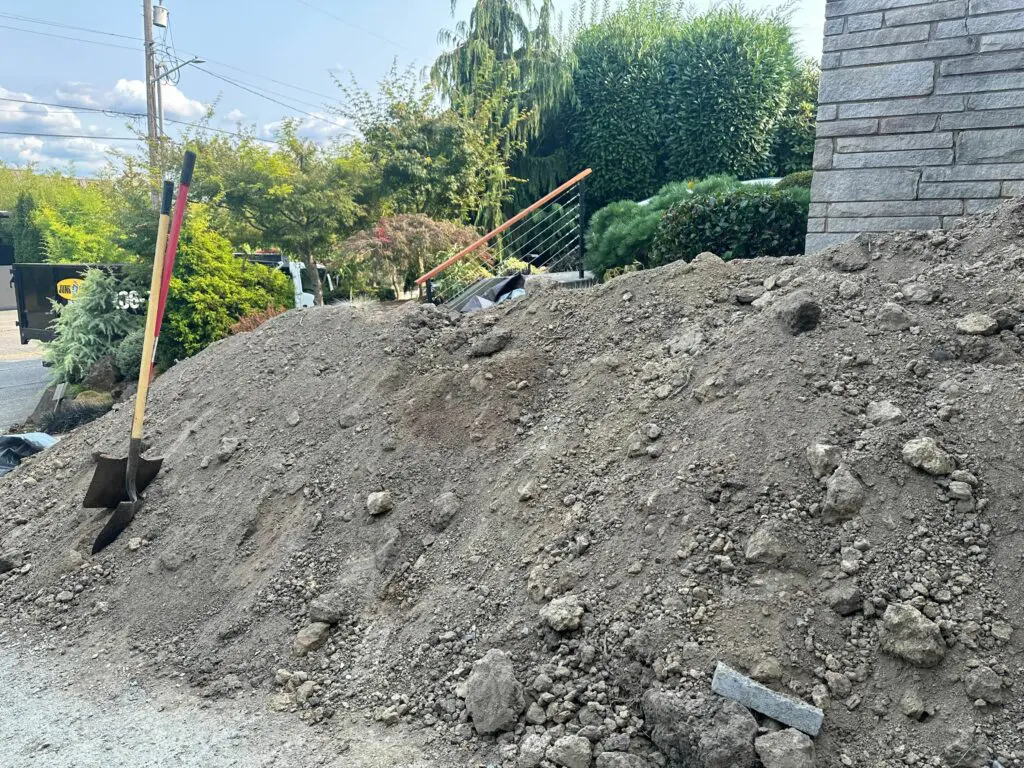
Transforming used or excess soil into a beneficial resource isn’t just an act of gardening; it’s a step towards environmental stewardship. Let’s dig deeper into how to recycle soil and unearth the benefits of this green practice.
How to Recycle Dirt: Detailed Steps
- Start by Sorting: Begin with separating your dirt. Ensure that the soil you plan to recycle is free from contaminants such as chemicals, oil, or debris. This distinction is crucial as only clean, uncontaminated soil is suitable for recycling purposes.
- Test the Soil: Unsure about your soil’s health? Conduct a soil test. This can reveal nutrient levels and potential contaminants, helping you decide if the soil is best used for gardens, needs amending, or requires disposal by professionals.
- Find a Facility: Discover local options for soil recycling. Many areas have dedicated facilities or services that process and repurpose clean fill dirt for construction, landscaping, and other uses. Engaging with these services supports a circular economy, turning waste into resource.
- Consider Composting: Enrich your soil by starting a compost pile. Mix organic waste like leaves, kitchen scraps, and yard trimmings with your soil. Over time, these materials break down, enhancing the soil with nutrients essential for plant growth.
- Reach Out to the Community: Connect with local community gardens, schools, or landscaping projects that might need soil. By donating your excess dirt, you’re not only clearing space but also supporting local green spaces and urban agriculture.
- Hire a Junk Removal Service: Most junk removal services also can handle dirt removal. Professional junk removal services (like us!) will know how and where to recycle your dirt so it doesn’t end up in a landfill.
Benefits of Recycling Soil: Explained
- Saves Money: By recycling and reusing soil, you avoid the costs associated with disposing of it or buying new topsoil. This can lead to significant savings, especially for large projects.
- Conserves Resources: Utilizing existing soil reduces the demand for freshly quarried topsoil, helping to preserve natural landscapes and reduce habitat destruction associated with soil extraction.
- Improves Soil Health: Composting transforms soil into a richer, more nutrient-dense medium that’s ideal for plants. This process not only revitalizes the soil but also promotes healthier plant growth, leading to more robust gardens and landscapes.
- Supports Local Projects: Your excess soil can be a boon for community projects. Schools, parks, and community gardens often seek donations of clean soil for educational projects, beautification, and food production, fostering community ties and green initiatives.
- Reduces Waste: By keeping soil out of landfills, you help reduce environmental pollution and the strain on waste management systems. Recycling soil contributes to a more sustainable and environmentally friendly waste cycle.
Embracing soil recycling is not just about disposing of excess dirt; it’s about contributing to a cycle of renewal and sustainability. By giving new life to old soil, we support healthier ecosystems, stronger communities, and a greener planet. Let’s turn the cycle of waste into a cycle of growth!
How to Choose the Right Professional Soil Removal Services
When your backyard project leaves you with mountains of excess dirt, or you’re dealing with soil from a commercial site, finding the right professional soil removal service is crucial. Here’s how to ensure you’re picking the best in the biz:
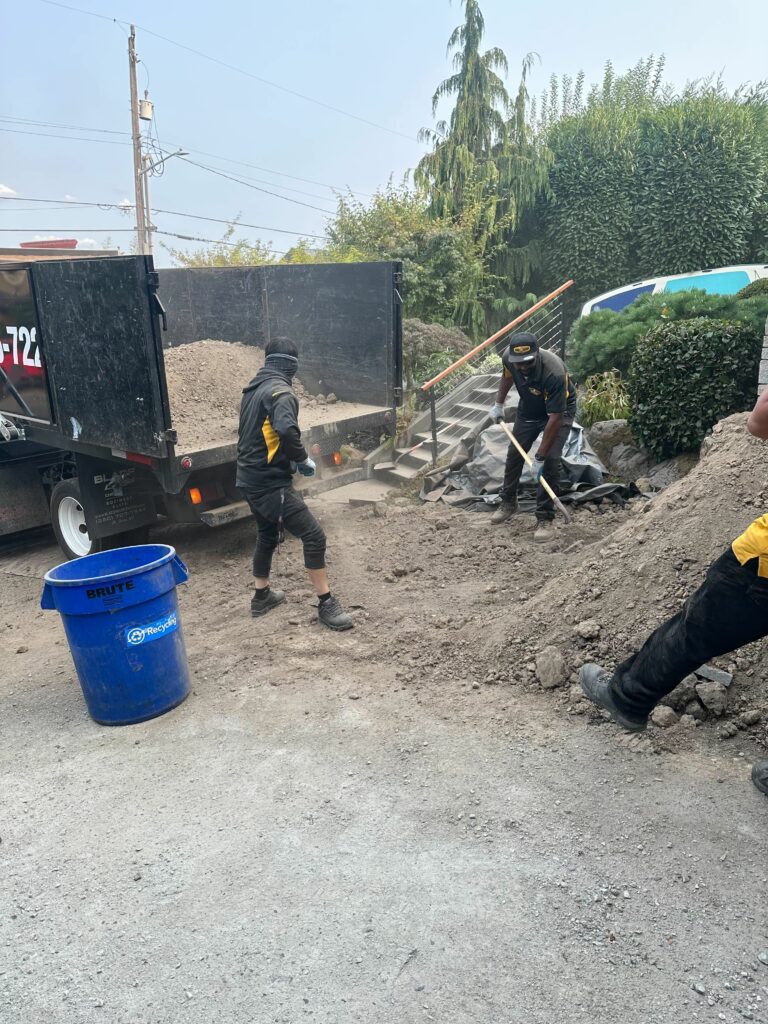
What to Look for in Professional Soil and Dirt Removal Services:
- Experience and Reputation: Look for a service with a solid track record. Read reviews and ask for references to ensure they’re known for reliability and quality work.
- Licensing and Insurance: Ensure they’re fully licensed and insured. This protects you in case of any accidents or issues during the removal process.
- Environmental Practices: Choose a company that prioritizes eco-friendly disposal methods. They should know how to handle different types of soil, including contaminated material, and have a clear recycling or disposal plan in place.
- Equipment and Capacity: Make sure they have the right tools for the job. From small backyard projects to large commercial sites, they should have the equipment and team to handle your specific needs.
- Transparent Pricing: Look for clear, upfront pricing. Avoid companies that are vague about costs or add hidden fees after the fact. A good service will provide a detailed quote before starting the work.
- Customer Service: Good communication is key. Choose a company that’s responsive, answers your questions, and keeps you updated throughout the process.
- Flexibility and Availability: Your project might have specific timing needs. Check that the service can accommodate your schedule and has a flexible booking system.
Choosing the right dirt removal service isn’t just about getting rid of dirt; it’s about ensuring the process is smooth, environmentally responsible, and hassle-free. Take the time to research and select a junk removal company that ticks all these boxes, and you’ll be one step closer to clearing your space—and your mind—effectively.
Common Questions People Usually search about Dirt Removal
How to get rid of extra garden soil?
Extra garden soil doesn’t have to go to waste! Consider repurposing it for new planting areas, offering it to neighbors, or donating it to community gardens. If it’s too much, local soil removal services or recycling centers can help.
Can you take dirt to the dump?
Yes, but it’s not always the best option. Many dumps have specific sections for clean fill dirt, but they may charge a fee, and it’s not the most eco-friendly choice. Check local regulations and explore recycling or donation options first.
What is the cost to remove dirt?
The cost to remove dirt varies based on factors like volume, location, and disposal method. Typically, prices can range from a few hundred to several thousand dollars. To avoid surprises, get a detailed quote from a professional service beforehand.
Are there services for soil removal?
Absolutely! There are many professional soil removal services tailored to different needs, from small residential projects to large commercial undertakings. Look for companies with good reviews and eco-friendly practices.
How to handle construction dirt disposal?
Construction dirt, especially if mixed with debris, requires careful handling. Contact professional removal services that specialize in construction waste. They can sort, recycle, and dispose of the material safely and efficiently.
What are the regulations for disposing of dirt?
Regulations vary by location but generally aim to prevent contamination and environmental harm. It’s essential to understand local guidelines on waste disposal and consider soil testing for potential contaminants. When in doubt, consult with professional disposal services to ensure compliance and proper handling.
